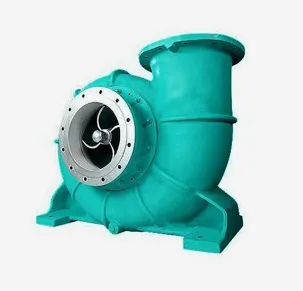English
- Afrikaans
- Albanian
- Amharic
- Arabic
- Armenian
- Azerbaijani
- Basque
- Belarusian
- Bengali
- Bosnian
- Bulgarian
- Catalan
- Cebuano
- Corsican
- Croatian
- Czech
- Danish
- Dutch
- English
- Esperanto
- Estonian
- Finnish
- French
- Frisian
- Galician
- Georgian
- German
- Greek
- Gujarati
- Haitian Creole
- hausa
- hawaiian
- Hebrew
- Hindi
- Miao
- Hungarian
- Icelandic
- igbo
- Indonesian
- irish
- Italian
- Japanese
- Javanese
- Kannada
- kazakh
- Khmer
- Rwandese
- Korean
- Kurdish
- Kyrgyz
- Lao
- Latin
- Latvian
- Lithuanian
- Luxembourgish
- Macedonian
- Malgashi
- Malay
- Malayalam
- Maltese
- Maori
- Marathi
- Mongolian
- Myanmar
- Nepali
- Norwegian
- Norwegian
- Occitan
- Pashto
- Persian
- Polish
- Portuguese
- Punjabi
- Romanian
- Russian
- Samoan
- Scottish Gaelic
- Serbian
- Sesotho
- Shona
- Sindhi
- Sinhala
- Slovak
- Slovenian
- Somali
- Spanish
- Sundanese
- Swahili
- Swedish
- Tagalog
- Tajik
- Tamil
- Tatar
- Telugu
- Thai
- Turkish
- Turkmen
- Ukrainian
- Urdu
- Uighur
- Uzbek
- Vietnamese
- Welsh
- Bantu
- Yiddish
- Yoruba
- Zulu
Telephone: +86 13120555503
Email: frank@cypump.com
Oct . 06, 2024 13:47 Back to list
pipeline pump station
Understanding Pipeline Pump Stations A Critical Component in Fluid Transportation
Pipeline pump stations are essential infrastructures in the transportation of liquids, gases, and other fluids across vast distances. These facilities play a crucial role in ensuring that products such as crude oil, natural gas, water, and chemicals are moved efficiently from one location to another. In this article, we will delve into the importance of pipeline pump stations, their design and operation, and the challenges they face.
The Role of Pipeline Pump Stations
The primary function of a pipeline pump station is to boost pressure within the pipeline system, allowing fluids to overcome gravitational constraints, elevation changes, and friction losses that occur during transportation. Without pump stations, long-distance fluid transport would be impractical as gravitational flow alone would not suffice. These stations are strategically located at intervals along the pipeline, typically around 50 to 100 miles apart, depending on the type of fluid being transported and the specific requirements of each pipeline system.
Design and Components
A typical pipeline pump station consists of several vital components, including pumps, motors, control systems, and ancillary equipment. The pumps are the heart of the station, often centrifugal or positive displacement types, designed to move fluids efficiently. Motors, usually electric, provide the necessary power to the pumps. Control systems are integral for monitoring the operation and performance of the pump station, ensuring that pressure levels are maintained and that the system operates optimally.
Additionally, pipeline pump stations may include filtration systems to remove impurities from the fluid, storage tanks for intermediate storage, and safety equipment to mitigate risks associated with high pressures and hazardous materials
. The design must also consider environmental factors, flood risks, and accessibility for maintenance and emergency response.Operational Challenges
pipeline pump station

Despite their importance, pipeline pump stations face a variety of challenges. One of the most significant issues is the potential for leaks and spills. The transport of hydrocarbons or toxic fluids poses serious environmental risks, and even a minor leak can lead to significant ecological damage. Regular maintenance and rigorous safety protocols are essential to prevent such incidents.
Another challenge is the integration of renewable energy sources. As the world shifts toward sustainability, there is increasing interest in using renewable energy to power pump stations. While this could reduce carbon footprints, it also introduces complexities related to energy availability and variability, necessitating innovative design and management solutions.
Furthermore, pipeline pump stations must comply with regulatory standards enforced by government agencies. This includes environmental regulations, operational safety standards, and reporting requirements. Navigating these regulations can be complex and often requires substantial investment in technology and training.
The Future of Pipeline Pump Stations
Looking ahead, the future of pipeline pump stations is undoubtedly tied to advancements in technology. Innovations such as smart sensors, IoT connectivity, and automation can enhance the efficiency and safety of pump station operations. Predictive maintenance, driven by data analytics, can help identify potential issues before they escalate, ensuring reliable operation and minimizing downtime.
Moreover, as global energy demands shift and evolve, pipeline pump stations must adapt. This might include resizing infrastructure, incorporating new technologies, or even transitioning to transport novel energy sources, such as hydrogen.
In conclusion, pipeline pump stations are critical to the fluid transportation network, ensuring that essential resources are delivered safely and efficiently. With ongoing advancements and a focus on sustainability, these facilities will continue to play a vital role in the energy sector and beyond. As we confront the challenges of the future, the evolution of pipeline pump stations will be key to maintaining the balance between resource demands and environmental stewardship.
-
ISG Series Vertical Pipeline Pump - Chi Yuan Pumps Co., LTD.|High Efficiency, Energy Saving, Low Noise
NewsJul.30,2025
-
ISG Series Vertical Pipeline Pump- Chi Yuan Pumps|High Efficiency&Low Noise
NewsJul.30,2025
-
ISG Series Vertical Pipeline Pump-Chi Yuan Pumps Co., LTD.|High Efficiency&Energy Conservation
NewsJul.30,2025
-
ISG Series Vertical Pipeline Pump - Chi Yuan Pumps Co., LTD.|Advanced Hydraulic Design&Energy-Efficient Solutions
NewsJul.30,2025
-
ISG Series Vertical Pipeline Pump - Chi Yuan Pumps Co., LTD.
NewsJul.30,2025
-
ISG Series Vertical Pipeline Pump - Chi Yuan Pumps Co., LTD.|energy-efficient fluid handling&industrial durability
NewsJul.30,2025










